The provisional BPS area figures suggest the total area of fodder beet now stands at 10,088ha, up 822ha from 2017. This increase stems from an increased area from exiting growers but also a number of returning and new growers. An 89ha increase in sugar beet area is recorded, bringing the total area to 728ha. Beet is a poor competitor with weeds. Its wide spacing and high nutrient requirements means that weeds have amble opportunity to flourish causing significant yield reductions.
For example a 10% infestation of scutch grass will lead to a yield reduction of 15%. A 20% infestation will lead to a yield reduction of 34%. Weed control is of utmost importance and generally takes the form of a two-three spray programme. Weeds should be sprayed in good growing conditions.
T1 herbicide options
The first herbicide application should be applied when the target weeds are at the mid to late cotyledon stage. Many will have applied this spray by this stage. Weeds are easiest controlled when small, especially difficult to control weeds such as charlock. Emerging plants may be sensitive to herbicides so reduce rates accordingly. Teagasc suggests that where charlock is present, use a full rate of Debut but reduce rates of the partner products. See option two in Table 1.
Table 1: Teagasc-suggested beet herbicide options for the first application
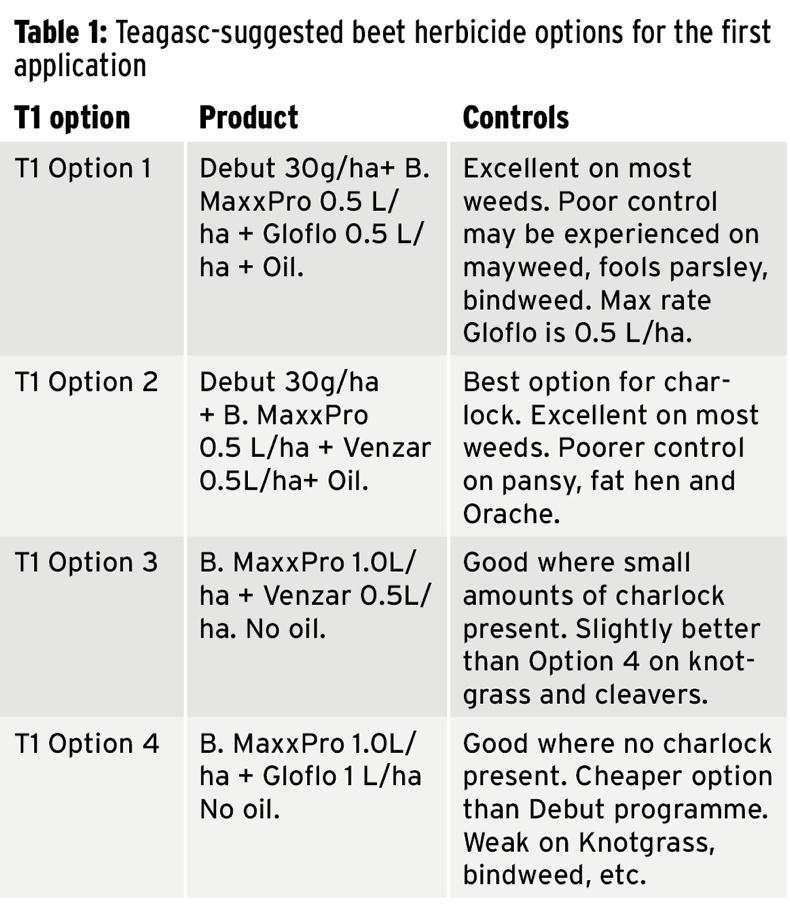
Note: Results from Teagasc Oak Park show that T1 Debut programmes will work best with the addition of methylated rape oils, eg Phas2, Rapeoil 95 or Toil at 0.5-0.75% spray volume (minimum 0.3 L/ha).
T2 herbicide options
The main herbicide application is applied around 10 to 14 days post T1 spray. Many crops will be close to the timing for the second herbicide application. Where charlock is still an issue, use a Debut-based mix (see option two in Table 2). Aim to spray in the evening or early morning as some varieties of fodder beet are more susceptible to spray scorch than true sugar beet varieties. Table 2 contains a list of Teagasc-recommended herbicide option for T2 sprays.
Table 2: Teagasc-suggested beet herbicide options for the second application
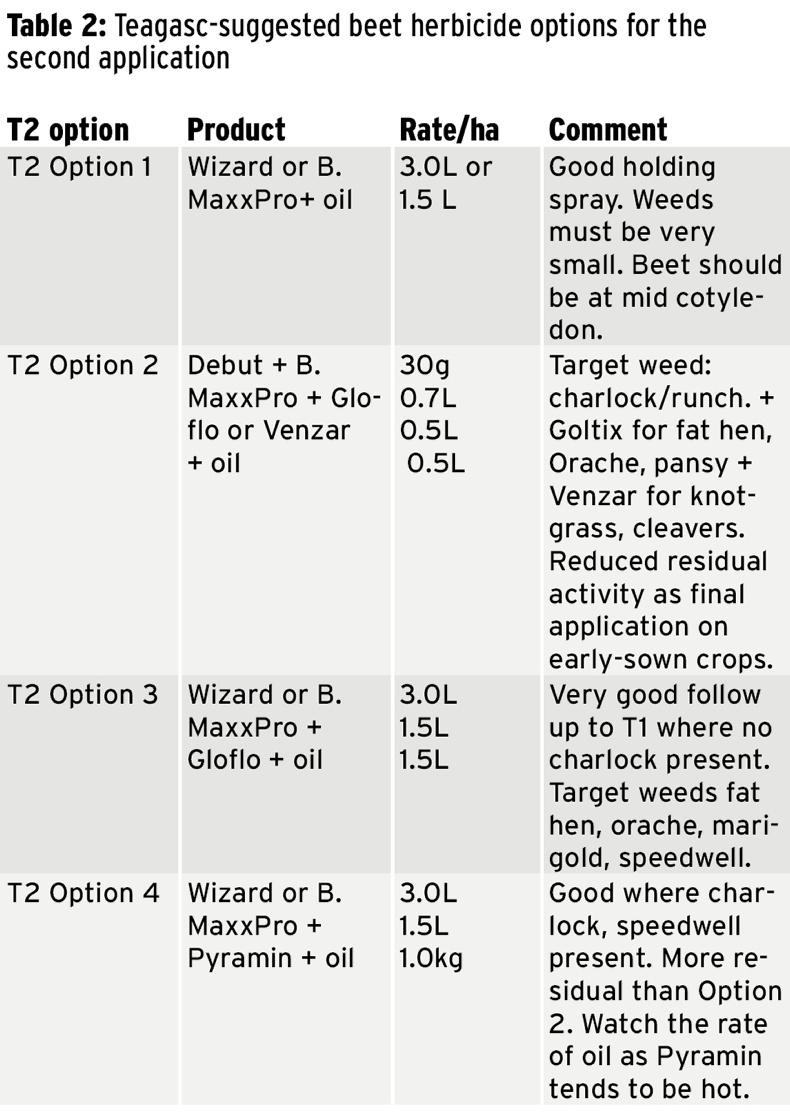
Note: To improve the control of fools parsley and nippleworth, add clopyralid (Shield) at 0.5–0.7 l/ha (100 g/l) and increase the rate (0.75-1.0 l/ha) where thistles/potatoes are the target. Teagasc recommend reducing oil when using clopyralid in the mix.
Read more
Spring barley aphicides and winter wheat T2s
Monday management: head sprays being applied as barley hits the paintbrush stage
The provisional BPS area figures suggest the total area of fodder beet now stands at 10,088ha, up 822ha from 2017. This increase stems from an increased area from exiting growers but also a number of returning and new growers. An 89ha increase in sugar beet area is recorded, bringing the total area to 728ha. Beet is a poor competitor with weeds. Its wide spacing and high nutrient requirements means that weeds have amble opportunity to flourish causing significant yield reductions.
For example a 10% infestation of scutch grass will lead to a yield reduction of 15%. A 20% infestation will lead to a yield reduction of 34%. Weed control is of utmost importance and generally takes the form of a two-three spray programme. Weeds should be sprayed in good growing conditions.
T1 herbicide options
The first herbicide application should be applied when the target weeds are at the mid to late cotyledon stage. Many will have applied this spray by this stage. Weeds are easiest controlled when small, especially difficult to control weeds such as charlock. Emerging plants may be sensitive to herbicides so reduce rates accordingly. Teagasc suggests that where charlock is present, use a full rate of Debut but reduce rates of the partner products. See option two in Table 1.
Table 1: Teagasc-suggested beet herbicide options for the first application

Note: Results from Teagasc Oak Park show that T1 Debut programmes will work best with the addition of methylated rape oils, eg Phas2, Rapeoil 95 or Toil at 0.5-0.75% spray volume (minimum 0.3 L/ha).
T2 herbicide options
The main herbicide application is applied around 10 to 14 days post T1 spray. Many crops will be close to the timing for the second herbicide application. Where charlock is still an issue, use a Debut-based mix (see option two in Table 2). Aim to spray in the evening or early morning as some varieties of fodder beet are more susceptible to spray scorch than true sugar beet varieties. Table 2 contains a list of Teagasc-recommended herbicide option for T2 sprays.
Table 2: Teagasc-suggested beet herbicide options for the second application

Note: To improve the control of fools parsley and nippleworth, add clopyralid (Shield) at 0.5–0.7 l/ha (100 g/l) and increase the rate (0.75-1.0 l/ha) where thistles/potatoes are the target. Teagasc recommend reducing oil when using clopyralid in the mix.
Read more
Spring barley aphicides and winter wheat T2s
Monday management: head sprays being applied as barley hits the paintbrush stage











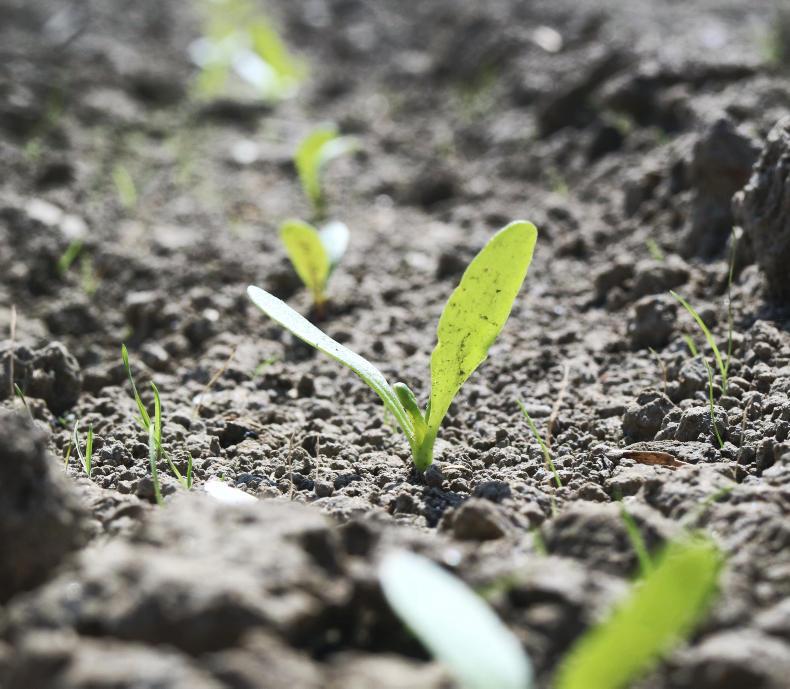
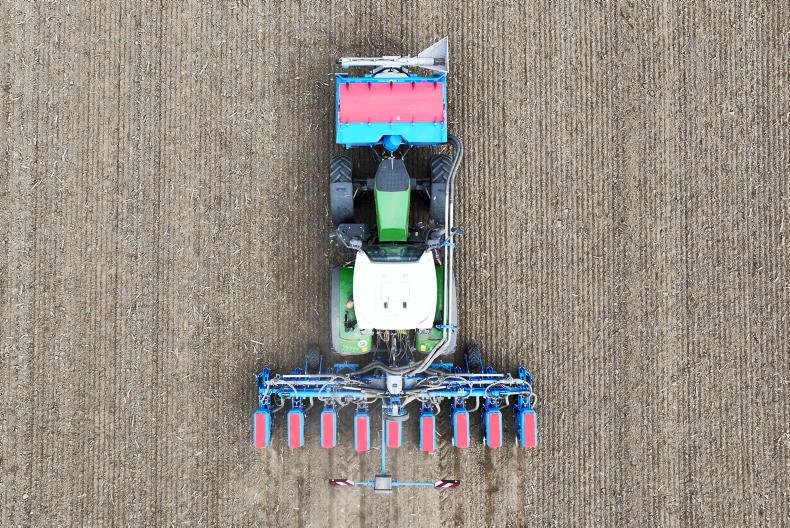



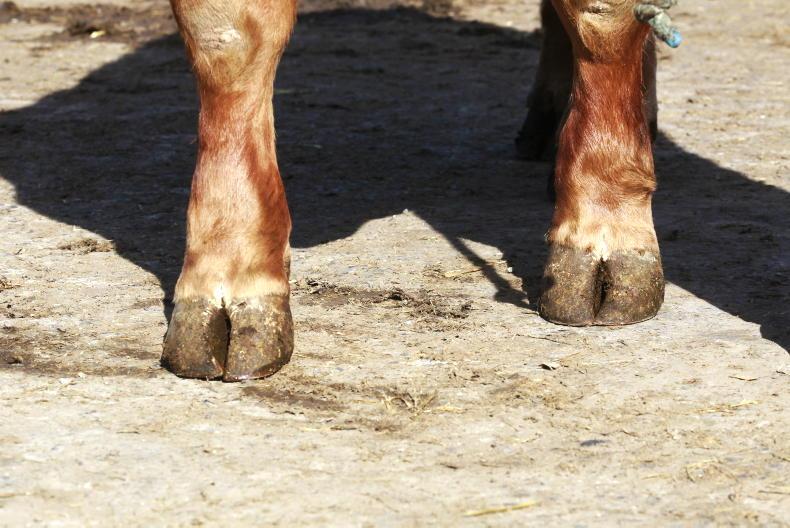
SHARING OPTIONS